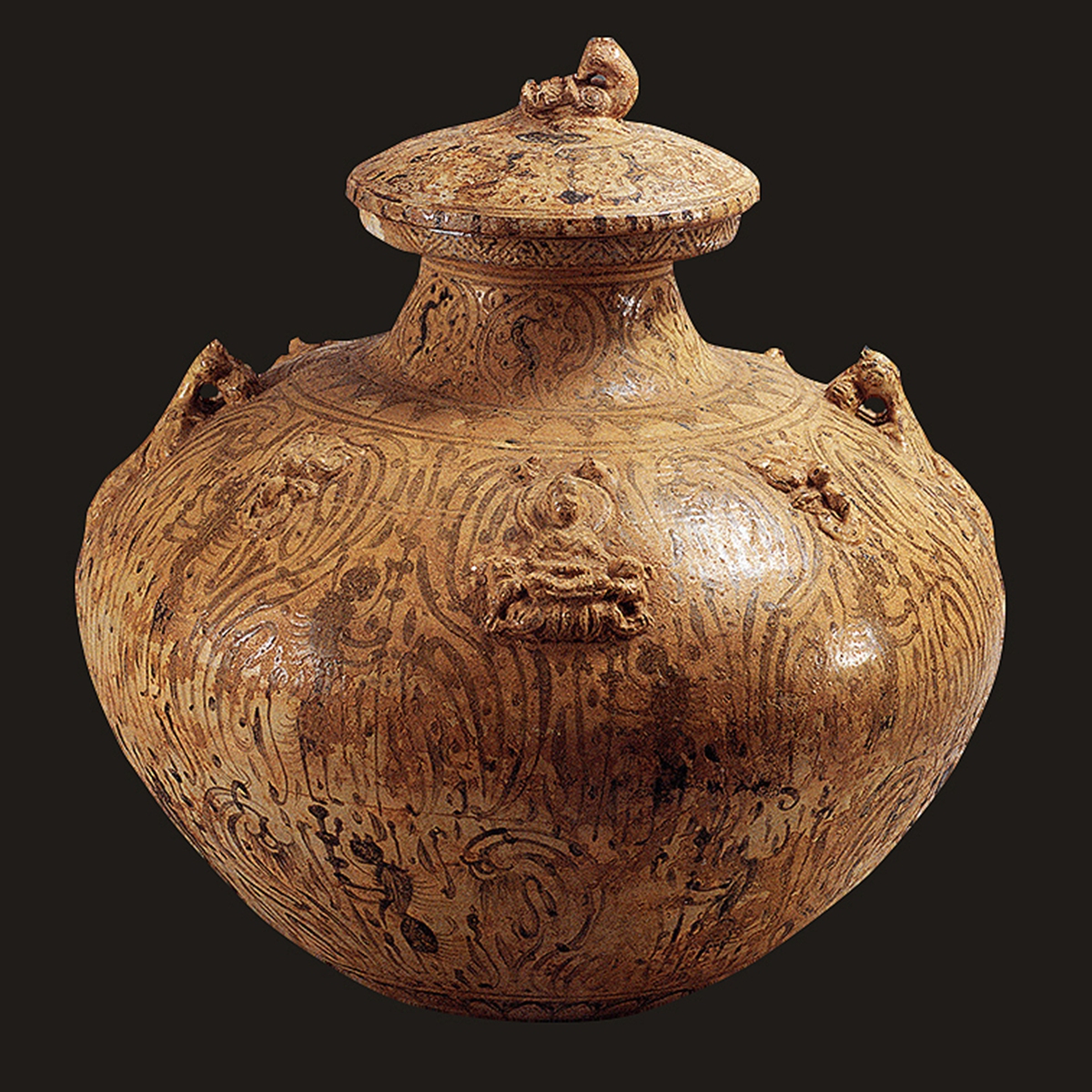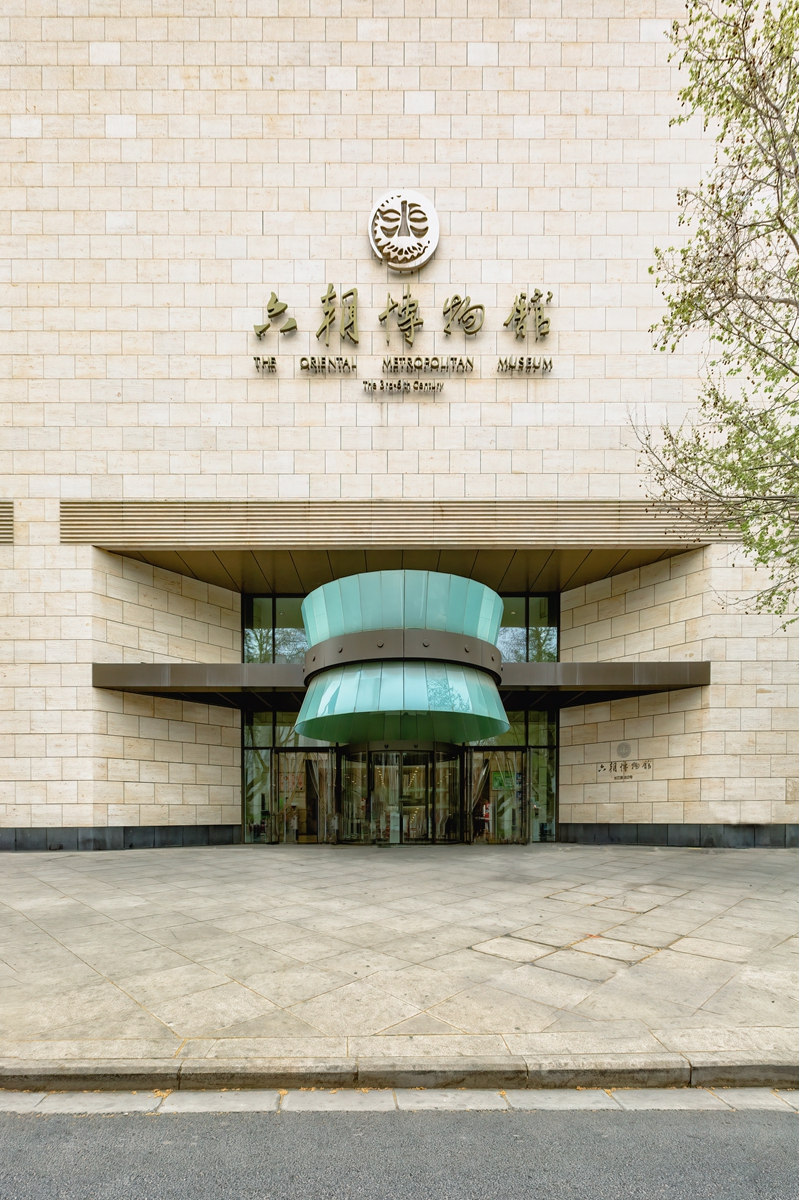
A celadon-glazed pot at the Oriental Metropolitan Museum Photo: VCG
The Oriental Metropolitan Museum, or the Six Dynasties Museum, is located in the heart of the historical city of Nanjing in East China's Jiangsu Province. The museum, which was built in 2014, holds numerous cultural relics that reveal the rich history of this ancient city as a capital during the Six Dynasties period.
The Six Dynasties period covers the time from the early Three Kingdoms (220-280) to the end of the Southern Dynasties (420-589). The celadon pot, archaeologists believe, is a treasure from the Wu kingdom (222-280), one of the kingdoms that vied for power over China during the Three Kingdoms period.
Built right above the ruins of the original ancient city of Jiankang (the ancient name for Nanjing during the Six Dynasties period), the museum's mission is to present the most splendid era of Nanjing as a cosmopolitan ancient metropolis.
In addition to learning about the city's popular and attractive scenic spots, visitors to the museum can also explore the historical records and antiques in its collection and see for themselves just how far and wide the city's influence was centuries ago.
Nanjing's historical landscape was influenced by former capitals such as Chang'an (today's Xi'an in Shaanxi Province) and Luoyang (in Henan Province) in the north, and it also served as a "transition station" to spread culture toward the southern part of China, Zhang Yiwu, a professor of Chinese language and literature at Peking University, told the Global Times on Thursday.
"Nanjing is an important city as it shows the development of Chinese civilization along the Yangtze River Basin. The region's geo-cultural characteristics, which were different from the northern part of China, helped make the Six Dynasties to become a peak of humanity outcomes such as arts and ancient literature," Zhang noted.

The Oriental Metropolitan Museum Photo: VCG
Art reveals cultural exchangesIn the center of the Oriental Metropolitan Museum sits one of the most valuable treasures of all times for Nanjing: A celadon-glazed pot with a tray-shaped mouth decorated with pictures of immortals.
The decorations on the pot depict peculiar images such as immortals with feathered wings on their backs, lovebirds as well as Buddha statues.
"This artifact was completed using an under-glaze technique [which meant the drawings were applied before the glaze]. Originally, experts thought that this technique didn't come into being until the Tang Dynasty (618-907), but the appearance of this treasure moved the appearance of this technique forward by 500 years, way before the Tang Dynasty," said Bai Ning, an exhibition curator at the Oriental Metropolitan Museum.
And it's far more than that.
The decorations on the pot, the fusion of winged immortals, or
yuren, and Buddha statues reflect the far-reaching spread of Buddhism in China, which reached the Central Plains and even further eastward to Nanjing.
"During the Han Dynasty [206BC-AD220], Buddhism spread throughout China, starting at the first Buddhist temple built in China, the White Horse Temple in Luoyang, and then continuing to the east and south," Mu Hongyan, a cultural professor at the School of Asian Studies, Beijing Foreign Studies University, told the Global Times, noting that these traces can be spotted in many ancient artworks.

Some of the relics at the Oriental Metropolitan Museum, unearthed from the tomb of the Wu kingdom general Ding Feng Photo: VCG
Digging deeperWhile the museum uses artworks to introduce the city's history as a capital during the Six Dynasties, due to the vast gulf of time between that period and today, almost no traces of that period can be found in the architecture of the city today.
"While the city holds the title of 'Capital to the Six Dynasties,' the real traces of the ancient capital of Jiankang are in fact long gone. During the Southern Song Dynasty [1127-1279], Nanjing was razed in a severe fire. Also, frequent wars have left cultural relics and buildings in Nanjing severely damaged," Hu Axiang, the curator of the museum, said in an interview with Chinese news outlet The Paper.
Hu noted that Nanjing today has a combination of Chinese and Western architecture that dates back to the Republic of China (1912-1949) period. To find the glorious ancient capital of Nanjing thousands of years ago, one must, quite literally, dig deeper.
In 2008, archaeologists discovered a rammed earthen wall from the Six Dynasties period at a bus station construction site in the city center. According to research, the wall was part of the Jiankang city wall.
In 2014, the Oriental Metropolitan Museum, designed by the famous Chinese-American architect Pei Ieoh Ming's son Pei Chien Chung and their Pei Partnership Architects of the US, was built over the ruins of this wall.
"We say that there are two ways to preserve the two different kinds of cultural relics, movable relics and immovable relics like these walls. We needed to preserve the authenticity of this grand immovable cultural relic by building a museum around it, because if we had moved the wall to a brand new place to build the museum, the authenticity would have been completely ruined," said Hu.